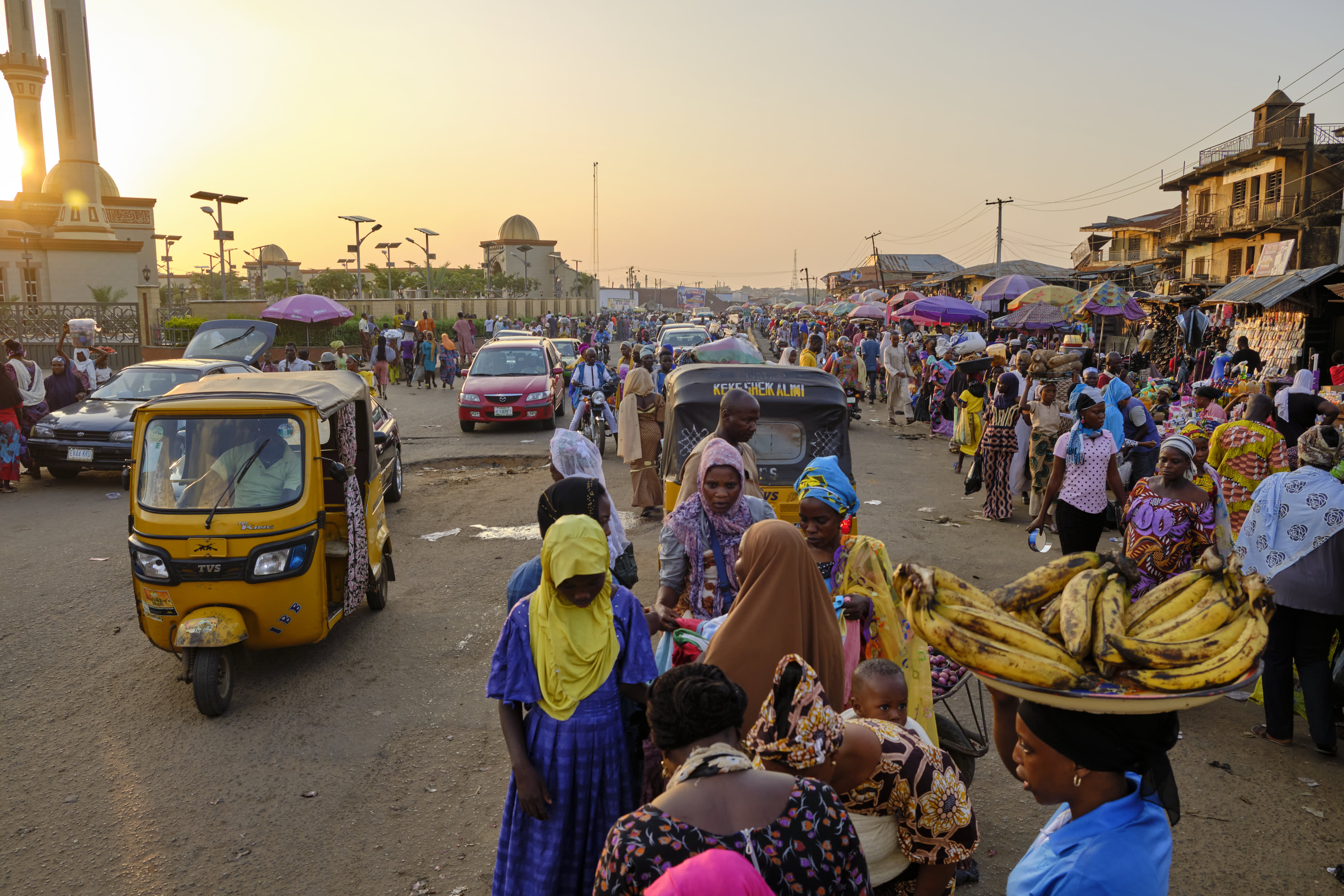People with colorful dresses selling and buying goods in a street market in Osogbo, Nigeria at dusk.
Jorge Fernández | LightRocket via Getty Images
Declining fertility rates will likely mean almost every country has shrinking populations by the end of the century, according to a new study, triggering “major shifts” in global economic power.
A new report in the peer-reviewed medical journal The Lancet, published Tuesday, expects the global population to peak at 9.7 billion by the year 2064, with the number of people across the globe forecast to fall back to 8.8 billion by 2100.
The analysis says that improvements in access to modern contraception and the education of girls and women could underpin “widespread” and “sustained” declines in global fertility.
It means that, in the absence of liberal immigration policies, 183 of 195 countries on the planet will not be able to maintain current populations by the end of the century.
Populations in 23 countries, including Japan, Thailand, Italy and Spain, are forecast to see their respective populations shrink by more than half, while another 34 countries, including China, are set to see a drop of more than 25%.
In contrast, the population of sub-Saharan Africa is anticipated to triple over the course of the century, the research said, to 3.07 billion in 2100, up from an estimated level of 1.03 billion in 2017.
North Africa and the Middle East are the only other regions predicted to have a larger population in 2100 when compared to 2017.
“This important research charts a future we need to be planning for urgently,” Richard Horton, the editor-in-chief of The Lancet, said in a press release.
“It offers a vision for radical shifts in geopolitical power, challenges myths about immigration, and underlines the importance of protecting and strengthening the sexual and reproductive rights of women.”
“Africa and the Arab World will shape our future, while Europe and Asia will recede in their influence,” Horton continued. “By the end of the century, the world will be multipolar, with India, Nigeria, China, and the US the dominant powers. This will truly be a new world, one we should be preparing for today.”
Migration to become ‘a necessity’
The research, which uses data from the Global Burden of Disease Study 2017, also warns of huge shifts in the global age structure.
It expects people over 80 years old to outnumber under 5s by two to one by 2100, as fertility falls, and life expectancy increases worldwide.
To be sure, the study forecast the number of children under 5 years of age to decline by 41% to 401 million in 2100, down from 681 million in 2017. Meanwhile, the number of people older than 80 years of age is set to increase six-fold to 866 million, up from 141 million.
Declining rates of working-age populations could lead to a dramatic shift in the size of economies, the research says, with China set to replace the U.S. with the world’s largest gross domestic product (GDP) by 2035.
Workers work at a vehicle chair manufacture factory in Lintong District of Xi’an, northwest China’s Shaanxi Province, Feb. 26, 2020.
Xinhua | Liu Xiao | Getty Images
The U.S. is expected to reclaim top spot by 2098, if immigration continues to sustain the country’s workforce, and as China sees a rapid population decline from 2050 onward.
India is thought to be one of the few — if only —major powers in Asia that will protect its working-age population over the course of the century.
As a result, it is forecast to rise up the GDP rankings to third, from seventh. At the same time, sub-Saharan Africa is touted to become “an increasingly powerful continent on the geopolitical stage as its population rises.”
Nigeria is singled out since it is expected to be the only country among the world’s 10 most populated nations to see its working-age population grow through to 2100, supporting rapid economic growth as it surges into ninth in the global GDP rankings, up from 23rd place in 2017.
The U.K., Germany and France are expected to remain in the top 10 for largest GDP worldwide at the turn of the century, while Italy and Spain are projected to fall to 25th and 28th, respectively, reflecting much greater population decline.
Professor Ibrahim Abubakar of University College London, who was not involved in the research, said if the findings of the study were “even half accurate” then migration would become “a necessity for all nations and not an option.”
“The positive impacts of migration on health and economies are known globally. The choice that we face is whether we improve health and wealth by allowing planned population movement or if we end up with an underclass of imported labour and unstable societies,” he added.



 RULE-BASED Pocket Option Strategy That Actually Works | Live Trading
RULE-BASED Pocket Option Strategy That Actually Works | Live Trading